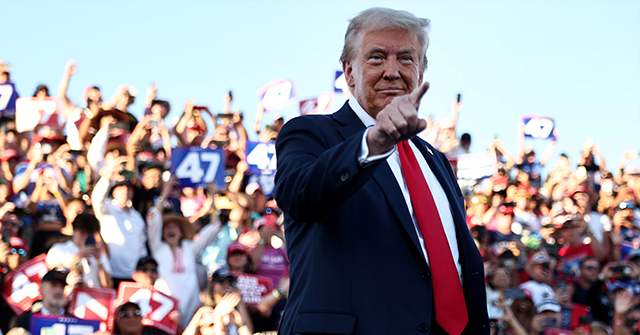Donald Trump’s recent speech at the Economic Club of Chicago showcased his steadfast belief in the power of tariffs, marking a continuation of his controversial approach to trade. In conversation with Bloomberg’s John Micklethwait, Trump highlighted his intention to impose tariffs on all imports, emphasizing that tariffs serve as a strategic tool rather than a mere protective measure. His assertion that “to me, the most beautiful word in the dictionary is ‘tariffs’” encapsulates his unyielding stance, as he aims to reshape global supply chains and revitalize American manufacturing. Trump’s tariffs are designed not only to penalize foreign imports but also to incentivize companies to bring their production back to the United States, thus stimulating job creation and investment in domestic industries.
Critics of Trump’s tariff policy, including Micklethwait, raise concerns about the potential for rising consumer prices and strained relationships with U.S. allies. However, Trump countered these arguments by asserting that higher tariffs would compel foreign companies to establish factories within U.S. borders. He believes that such shifts would lead to the repatriation of jobs and revitalization of America’s manufacturing capabilities, particularly in sectors that have suffered from free-trade policies. This perspective reflects a significant departure from traditional notions of protectionism; Trump’s tariffs are framed as catalysts for bringing investment and industrial activity back to America, challenging the narrative that they merely inflate costs for consumers.
Moreover, Trump posits that tariffs have the potential to invigorate competition and innovation within the domestic market. Contrary to the argument that protectionism breeds complacency, he suggests that by encouraging foreign carmakers to build plants in the U.S., tariffs would promote a more competitive environment. This would ultimately drive innovation as domestic companies like Ford and General Motors compete directly with global rivals. Trump’s emphasis on rejuvenating American industries, particularly in manufacturing and steel production, ties into a broader strategy that seeks to stimulate economic growth through competition, rather than insulating inefficient practices behind high import barriers.
Beyond the immediate economic implications, Trump’s tariff strategy also addresses concerns regarding international relations. Critics argue that his approach could alienate allies while provoking trade wars. However, Trump asserts that such fears overlook the reality of global economic interdependence. The U.S. market remains indispensable to nations seeking economic growth; therefore, the possibility of a prolonged trade conflict is minimal. Instead of inciting tensions, Trump’s tariffs serve as leverage to encourage foreign nations to reconsider their trade barriers, ultimately leading to more equitable agreements that benefit American workers and firms.
The underlying premise of Trump’s tariff plan is not merely about economic isolationism but rather about recalibrating trade relationships to prioritize American interests. By positioning tariffs as a bargaining chip, he aims to foster negotiations that compel foreign nations to reduce their own subsidies and tariffs in exchange for maintaining access to one of the world’s largest consumer markets. This approach argues for a new paradigm of trade, one that can lead to greater cooperation and mutual benefits rather than conflict and division.
In summary, Trump’s tariff strategy represents a departure from conventional trade policies, emphasizing a need for a more self-reliant American economy. This bold vision, which views tariffs as a strategic tool for reshaping global trade dynamics, aims to reclaim American sovereignty while strengthening the domestic manufacturing base. By fostering a competitive market and renegotiating trade terms that truly reflect American interests, Trump’s tariff approach advocates for an economic landscape that prioritizes U.S. workers, companies, and consumers, challenging the status quo and aiming to create a more prosperous future.

